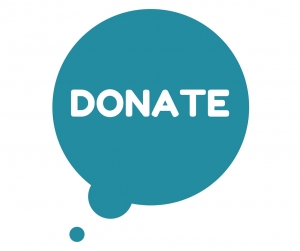 As the summer comes to an end and we prepare for (hopefully) the rainy season, it’s a good time to clean and organize your home. For some homeowners that could mean out with the “old” and in with the “new”—but what to do with the “old” when it’s not quite ready for the landfill? Donating used items is a great option as long as you do a little homework to find out which local organizations and donation centers are most appropriate for the items you’d like to give away. Use the following tips as a guideline for determining what goes where and how to get it there.
As the summer comes to an end and we prepare for (hopefully) the rainy season, it’s a good time to clean and organize your home. For some homeowners that could mean out with the “old” and in with the “new”—but what to do with the “old” when it’s not quite ready for the landfill? Donating used items is a great option as long as you do a little homework to find out which local organizations and donation centers are most appropriate for the items you’d like to give away. Use the following tips as a guideline for determining what goes where and how to get it there.
- Many items are eligible for donation. You might be surprised to learn exactly what items you can donate. In addition to clothing and furniture, cars, cell phones and other electronics, fitness equipment, home appliances—even art supplies and old towels—are widely accepted by specialized organizations. If you’re looking to donate a unique item, or several of the same items in bulk, do some further research about local organizations and donation centers in need of specific things.
- Consider what shape your items are in to determine where you donate. If you’re planning to donate a broken refrigerator, make sure the organization is aware the item is in need of repair. Some donation centers accept broken items for parts; however, most organizations and donation centers prefer to accept gently used items in working condition. Be sure to communicate the item’s condition prior to arranging a donation.
- After choosing where to donate, decide how you’ll get the items to the organization. Oftentimes large organizations and donation centers are able to arrange a day and time to pick up your unwanted items directly from your home or business. Smaller organizations in need might instead have certain days and times available for you to arrange a drop off at a specified location.
- Make sure to get a donation receipt for tax purposes. Before donating, make a detailed list of the items you’ll be giving away along with the estimated values. Keep in mind that, since the items are used, price points might be lower than expected. When your items are picked up or dropped off, request a receipt from the organization or donation center to keep track of what to count as a tax deduction. Speaking with a tax professional for advice also is a good idea.
Remember that dumping large items along your street or near a dumpster is littering. If you are caught dumping items you will be billed back for the cost of removing them. Alternatively, you could donate the items that are still in working condition, you’ll save money and help out those in need.

Follow us!
Twitter
LinkedIn